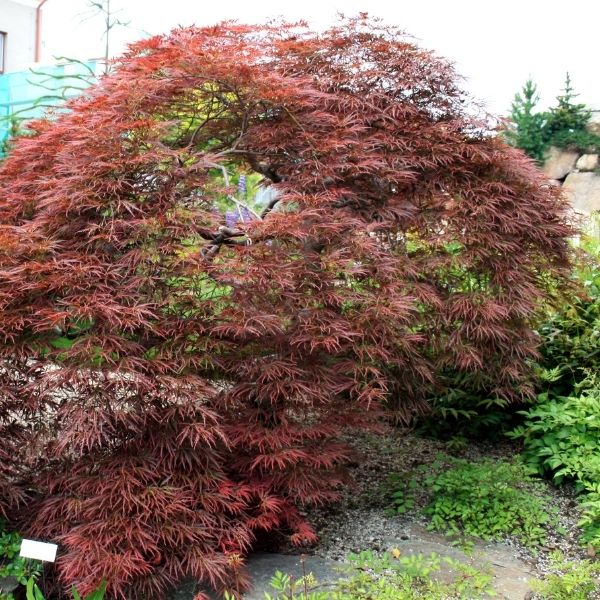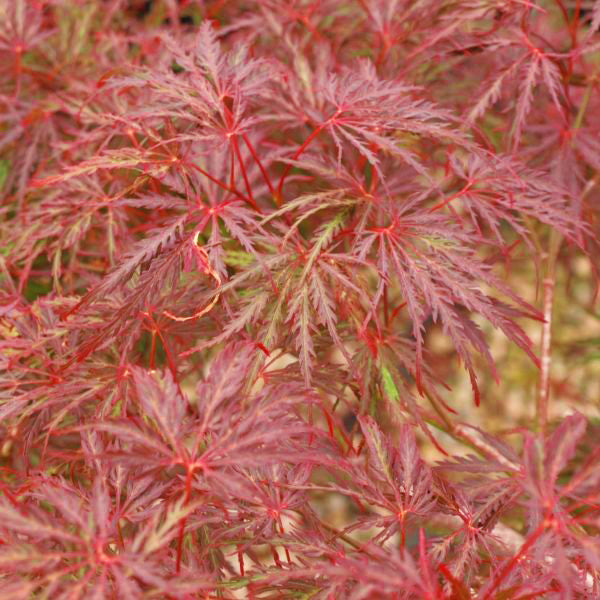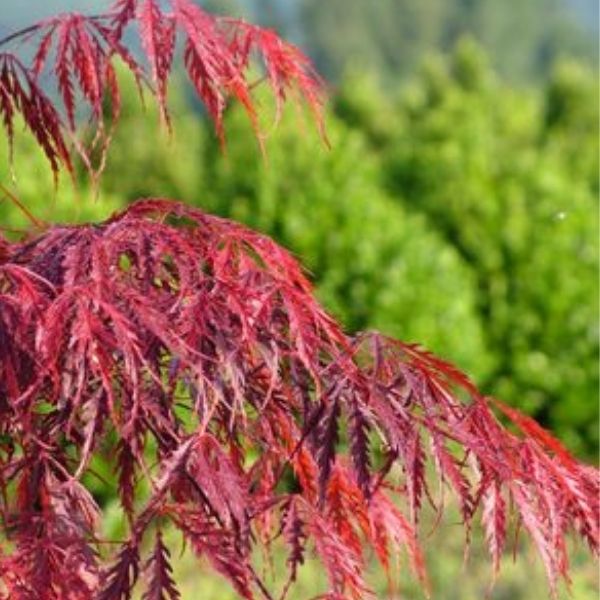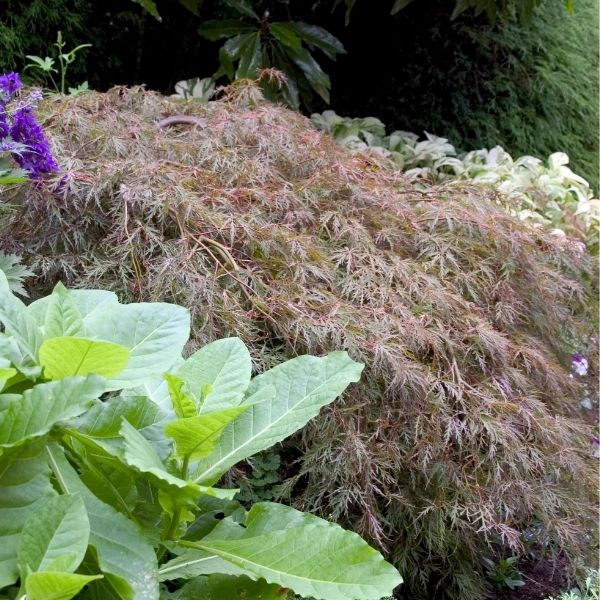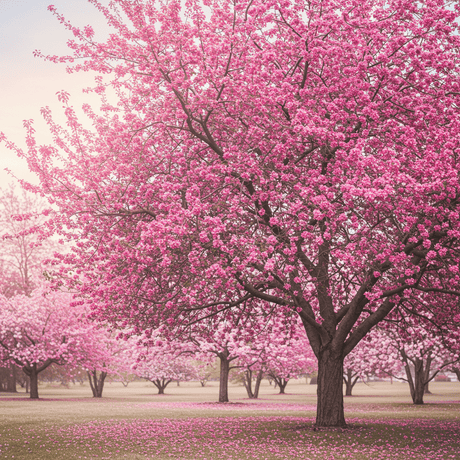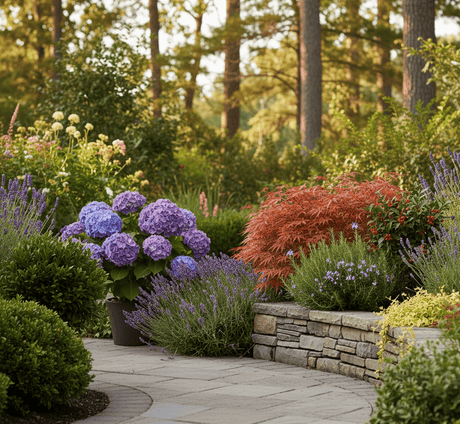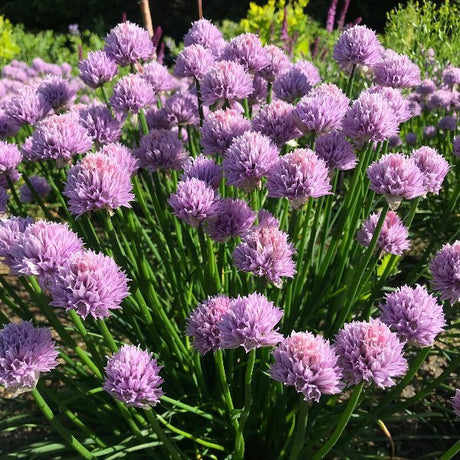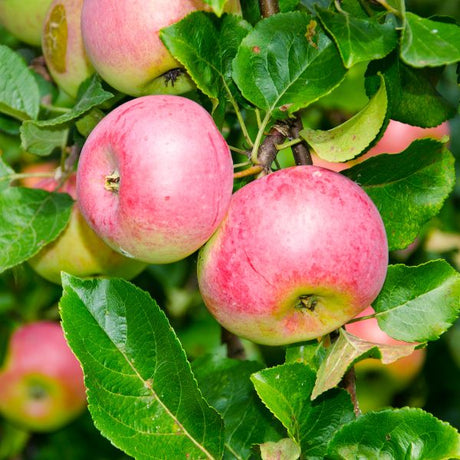Tamukeyama Japanese Maple Tree
Acer palmatum var. dissectum 'Tamukeyama'
Tamukeyama Japanese Maple Tree - #3 Container 3-4 Feet is backordered and will ship as soon as it is back in stock.
- Stay Protected with Plant Sentry ™
Plant Sentry™
Plant Sentry™

Plant Sentry™ Protected
Your order is protected by our compliance system that:
- Prevents restricted plants from shipping to your state
- Ensures plants meet your state's agricultural requirements
- Protects gardens from invasive pests and diseases
Delivery and Shipping
Delivery and Shipping
Delivery and Shipping
Fast, Safe Plant Delivery
Ships in 3-4 business days • Tracking provided • Weather protected
| Under $50 | $9.99 |
| $50 - $99.99 | $14.99 |
| $100 - $149.99 | $16.99 |
| $150 - $198.99 | $24.99 |
| $199+ | FREE |
✓ Zone-specific timing • ✓ Professional packaging • ✓ Health guarantee
Understanding Plant Options
Nature Hills offers plants in two main formats:
- Container Plants: Grown in pots with soil, sized by container volume and plant age
- Bare Root Plants: Dormant plants without soil, sized by height measurements
Container Plant Sizes
Container sizes indicate plant age and growing capacity rather than liquid volume equivalents. Our containers follow industry-standard nursery "trade gallon" specifications, which differ from standard liquid gallon measurements.
Young Plants (6 months to 18 months old)
| Container Size | Actual Volume | Metric Equivalent |
|---|---|---|
| 2" x 2" x 3" | 0.18 - 0.21 dry quarts | 0.20 - 0.23 dry liters |
| 4" Container | 0.31 - 0.87 dry quarts | 0.35 - 0.96 dry liters |
| 4.5" Container | 0.65 dry quarts | 0.72 dry liters |
| 6" Container | 1.4 dry quarts | 1.59 dry liters |
| 1 Quart | 1 dry quart | 1.1 dry liters |
| 5.5" Container | 1.89 dry quarts | 2.08 dry liters |
Established Plants (18 months to 2.5 years old)
| Container Size | Actual Volume | Metric Equivalent |
|---|---|---|
| 2 Quart | 2 dry quarts | 2.2 dry liters |
| #1 Container | 2.26 - 3.73 dry quarts | 2.49 - 4.11 dry liters |
| 5" x 5" x 12" | 3.5 - 4.3 dry quarts | 3.85 - 4.74 dry liters |
Mature Plants (2-4 years old)
| Container Size | Actual Volume | Metric Equivalent |
|---|---|---|
| #2 Container | 1.19 - 1.76 dry gallons | 5.24 - 7.75 dry liters |
| #3 Container | 2.15 - 2.76 dry gallons | 8.14 - 12.16 dry liters |
Large Plants (3-5 years old)
| Container Size | Actual Volume | Metric Equivalent |
|---|---|---|
| #5 Container | 2.92 - 4.62 dry gallons | 12.86 - 20.35 dry liters |
| #6 Container | 5.25 - 6.01 dry gallons | 23.12 - 26.42 dry liters |
| #7 Container | 5.98 - 6.53 dry gallons | 26.34 - 28.76 dry liters |
Bare Root Plants
Bare root plants are sold by height from the root system to the top of the plant. Plants may exceed minimum height requirements.
Common Sizes:
- Trees: 1 foot, 2 feet, 3 feet, 4 feet, 5 feet, 6 feet
- Shrubs & Perennials: 1 foot, 18 inches, 2 feet
Important Notes
Container Volume Specifications
- Trade Gallon Standard: Our containers follow industry-standard "trade gallon" specifications established by the American National Standards Institute (ANSI Z60.1) for nursery stock
- Volume Variations: Actual soil volume may vary due to plant root systems and growing medium settlement
- Age Indicators: Container size primarily indicates plant age and maturity rather than liquid volume equivalents
Growing Conditions
- Plant size can vary based on variety and growing conditions
- Container size helps indicate plant maturity and establishment level
- Larger containers generally mean more established root systems and faster landscape establishment
Seasonal Availability
- Bare root plants are available seasonally when dormant
- Container plants are available throughout the growing season
- Specific varieties may have limited availability in certain sizes
Questions?
For questions about specific plant sizes or availability, please contact our plant experts who can help you choose the right size for your landscape needs.
Plant Highlights
Tamukeyama Japanese Maple Tree highlights at a glance!
-
Plant Class
-
Botanical Name
-
Brand
-
Growing Zones5, 6, 7, 8
-
Growth RateSlow
-
Mature Height
-
Mature Width
-
Leaf Color
-
Flower Color
-
Fall Color
-
Pollinator FriendlyYes
-
Pollinator Required
-
Bloom PeriodLate Spring
-
Does Not Ship To
Characteristics
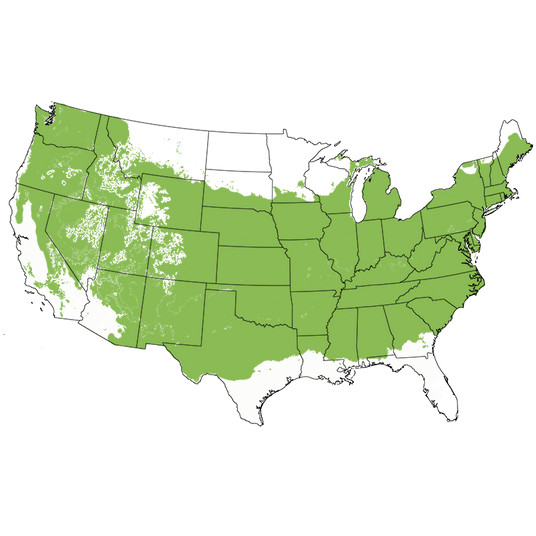
Growing Zones 5-8
Amazing Accent Tamukeyama Japanese Maple Tree
- Elegant 'Lace Cut' Purple Red Leaves
- Grows Well and Keeps Its Color in Shade
- Stunning Red Winter Bark
- In Production For 300 Years!
The best gardens create a sense of movement and mystery. The Tamukeyama Japanese Maple (Acer palmatum var. dissectum 'Tamukeyama') will give you both and more!
The Tamukeyama Japanese Maple Tree is a garden designer's favorite because of its texture, deep red leaf color, size, and cascading habit. It has been in production for over 300 years, a selection from the Kobayashi Nursery of old.
This lovely cascading maple covers itself in finely cut, delicate leaves. This outstanding foliage earns this beautiful deciduous tree its nicknames, Laceleaf and Cutleaf Maple, because its leaves are finely textured and deeply lobed. These long and narrow leaves are as elegant as lace. And its plum color shines all spring into fall, which adds to the overall visual impact.
This delightful tree takes on a breathtaking, weeping shape which is quite dramatic and impactful. And these branches droop all the way to the ground.
How to Use Tamukeyama Japanese Maple in the Landscape
The mounded Tamukeyama Japanese Maple is perfect for containers or raised beds beside koi ponds or walls because its branches will extend downward beyond its trunk. This creates a mounded effect and brings romance and mystery to your landscape.
The Tamukeyama Japanese Maple is a true statement tree. You and your neighbors will be amazed by its rich red foliage color, so plant it where you can admire it daily.
Great as a focal point in the landscape or in a bed with mixed perennials. The Tamukeyama Japanese Maple's cascading branches, weeping habit, and compact size make it ideal for almost any garden. Of course, it's especially beautiful in an Asian-inspired garden. But feel free to use it in any setting, from rustic to contemporary.
Remember that no Japanese Garden is complete without an Acer palmatum dissectum included. The Tamukeyama Japanese Maple is the perfect variety to do the job.
This is a beautiful tree in early spring and all through the growing season. But the fall color is simply spectacular when the leaves turn a mix of red, purple, and bronze.
#ProPlantTips for Care
This slow-growing dwarf maple will only reach a maximum height of 6 to 10 feet, but its delightful branches will cover about 10 to 12 feet in size. Tolerant of both hot and cold conditions, this hardy selection can adapt to a wide range of climates.
Plant your Tamukeyama Japanese Maple in the sun or part shade beneath a taller tree where it will receive afternoon shade. You can also site it in an eastern exposure, where it is often difficult to find specimen plants to feature.
The Tamukeyama Japanese Maple requires slightly acidic soil with good drainage and high organic matter to thrive. If poor drainage is suspected, mound your tree 12 to 18 inches above the soil line.
The Tamukeyama requires moist soil and will benefit from a 3 to 4-inch layer of mulch spread out to 3 feet from the outside of the canopy. This helps to keep the root zone cool and cuts down on surface evaporation.
This Japanese maple variety will do well in full sun in climates with higher humidity. Although tolerant of heat in dryer climates, give it protection from the hot summer afternoon sun. Protect this variety from high winds as well as this will cause leaf burn of the lacy foliage.
Minimal pruning is required to get the beautiful form of the Tamukeyama Japanese maple. Occasionally pruning may be required to check the spread of the tree and can be performed easily.
This is one of the best red varieties for holding its color even in the heat. The tree is known to leaf out later than other Japanese Maple selections, thereby avoiding the late freezes in some areas.
Don't miss out on the opportunity to turn heads and make a statement with a Tamukeyama Japanese Maple. It will add a professional flair to any landscape with its wonderful hue, size, and texture. Order today!
Single Stem, Multi Stem, Shrub Form, Oh My!
Before you buy, make sure you know what you’re getting! Single stem, multi stem and shrub forms are different so read a bit about which we’re currently offering below.
Single Stem:
These are plants that have one stem coming from the ground. Plants can also be considered single stems when lower branches are removed to raise the height of the branching. Sometimes, you will hear a single stem referred to as Tree Form.
Multi-Stem:
These are plants with 2 or more stems planted together in the ground in close proximity to form a clump. There are times when multi-stems are formed by a tree that branches at the soil line with more than one main stem.
Shrub Form:
These are bushy plants with many stems and branchings close to the ground. They are referred to as shrubs or bushes and are often shorter than their tree forms.

